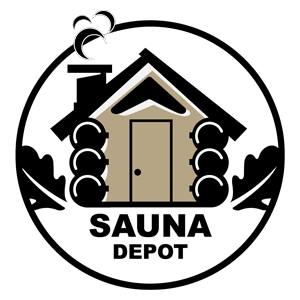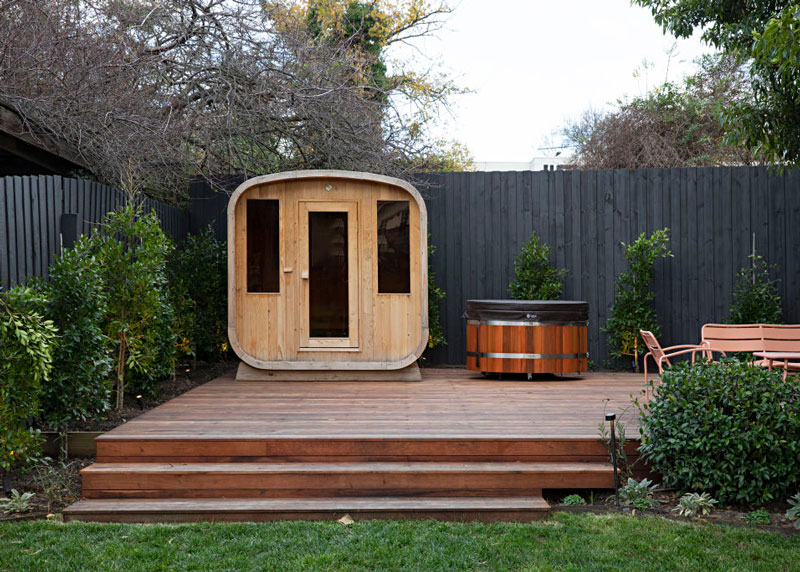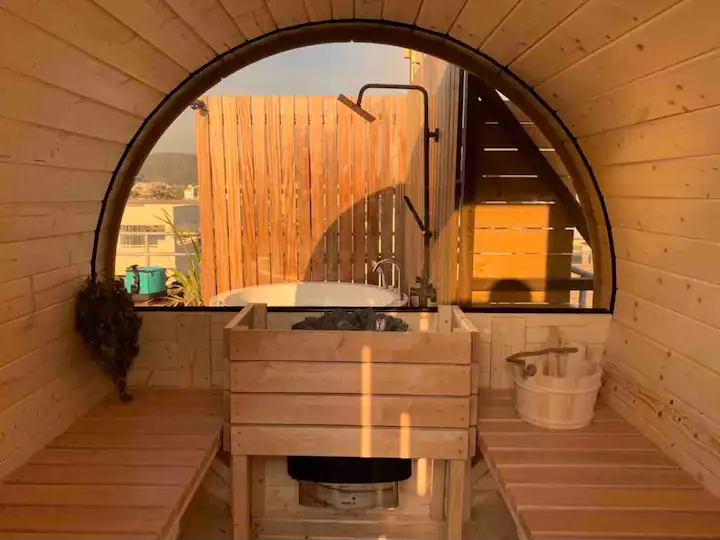Traditional Sauna vs. Moroccan Hammam
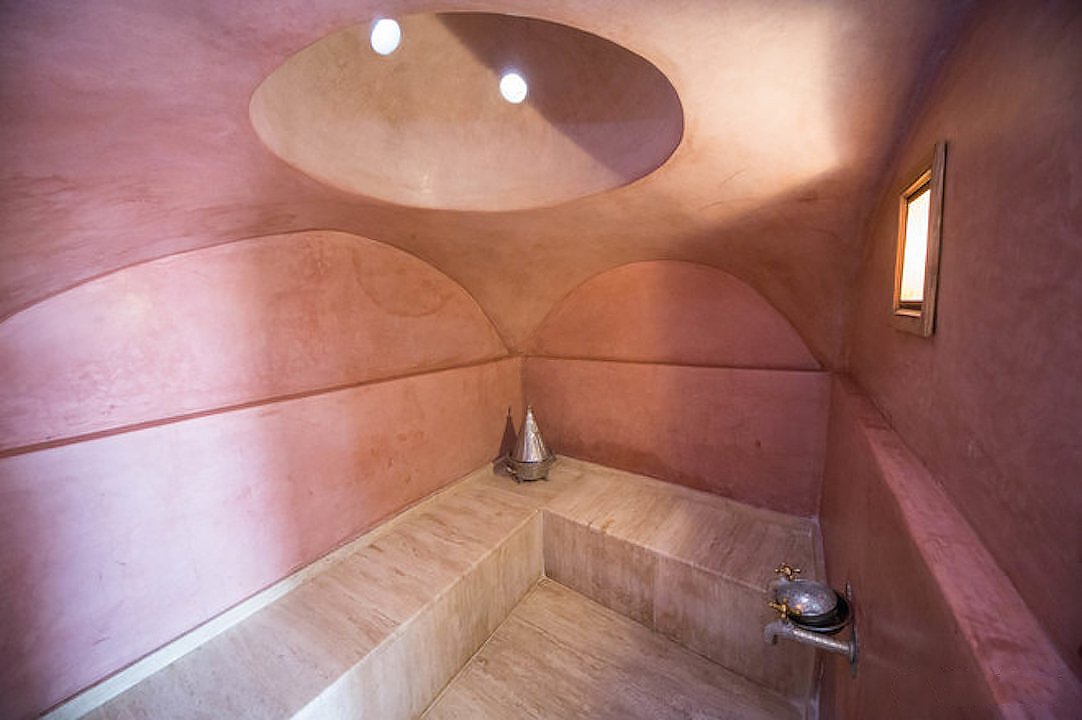
In today’s hectic and stressful world, finding the ways to relax has become dramatically important for personal health and wellbeing. There are many options to do so such as meditating, enjoying your hobbies, walking, exercising, dancing, and etc. But only two of them have come out as pillars of relaxation, stress relief, and physical and mental rejuvenation – the sauna and the hammam.
These sanctuaries of wellbeing both offer a relaxation experience but are profoundly different in their methods, cultural origins, and benefits. Let’s consider these two experiences to help you make an informed choice based on your needs, preferences, likes, and dislikes.
The Difference between Sauna and Hammam
Sauna or hammam, both bring pleasure and bliss, an amazing sense of rebirth. The most valuable sauna’s and hammam’s things are the body detoxification and deep skin cleansing. While a traditional sauna has a very high temperature (up to 90°C) and the low level of humidity (between 5-10%), a hammam is exactly the opposite: a moderate temperature and high humidity.
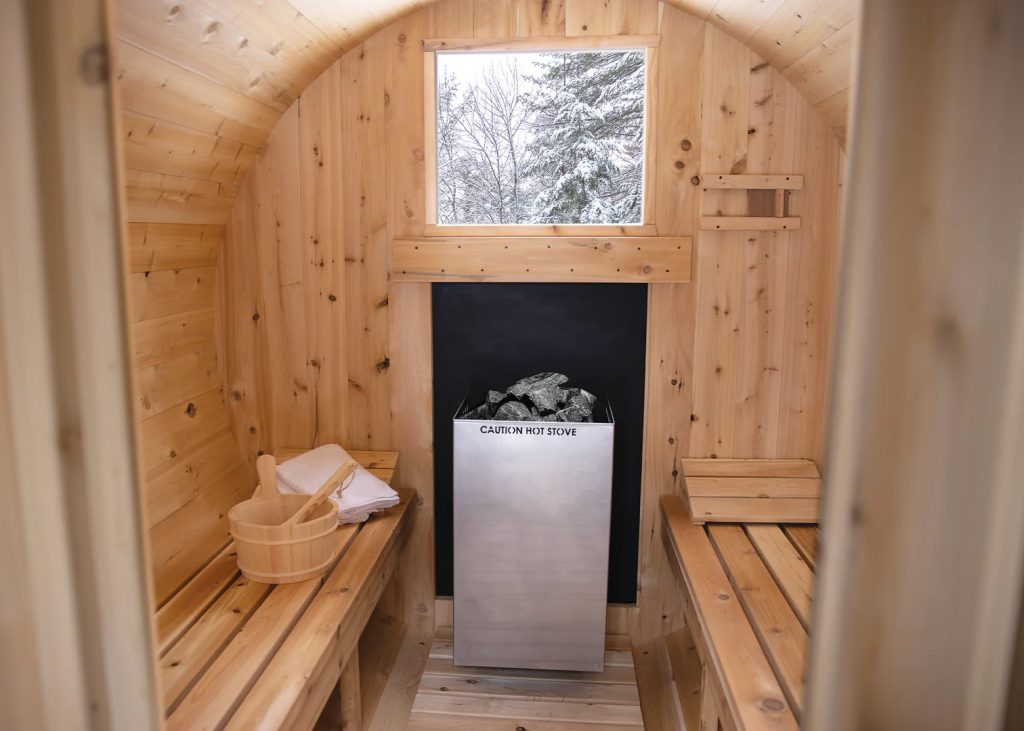
Hammam works on our body very differently than sauna, since you don’t sweat there. The moisture that forms on the surface of the skin is condensation that falls on a body that is colder than the environment. Wet steam helps to relax, unwind, and prepare for further spa treatments.
Hammam is often preferred for its beauty benefits due to humidity and treatments like scrubbing, oiling, hydrating, and massaging. The steamed and moisturized skin ten times better absorbs all the valuable components of cosmetics. The Finnish sauna is more associated with muscle relaxation, pain relief, and improving flexibility.
What Is Special about Moroccan Hammam
Moroccans visit hammam at least once a week; it is not a luxury; it’s a lifestyle, a ritual-based cleansing treatment, a beauty ritual, and an ancient healthy tradition. Moroccan hammam has some special features that make it standing out of any other types of bathing, including hammams in other countries. The most peculiar ones are the following four:
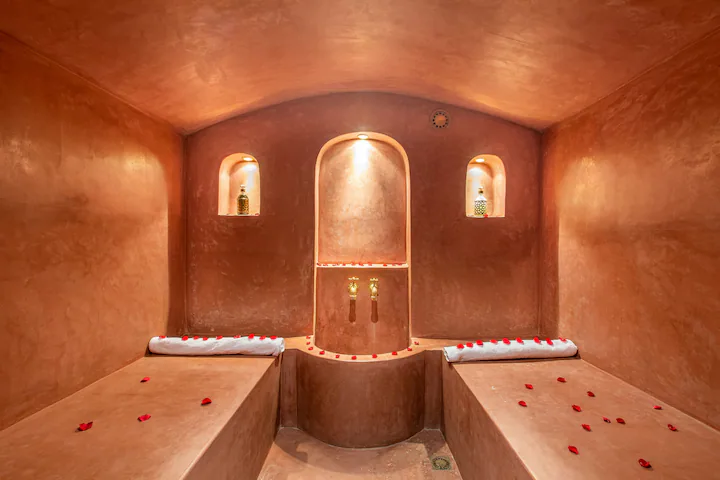
Argan oil
Argan oil – the beauty elixir from Arabic fairy-tales, the unparalleled Moroccan beauty hit. This oil is obtained by cold pressing from the kernels of the argan tree, which grows only in one place on the planet – on the outskirts of the Sahara, in the South-Western Morocco.
Having incredibly healing, anti-aging, and soothing powers, it’s difficult to list all skin problems and health conditions that argan oil cannot successfully cope.
Cleansing Kessa Mitt
This gentle scrubbing “tool” is made of twisted silk fibers (sometimes with the addition of cotton or even goat hair). It’s much more effective than any sponge in removing dead cells without damaging the skin. The self-massage with kessa mitt makes the skin unusually smooth, and in the longer term, helps to maintain youth.
Beldi Soap
Beldi Soap is a quintessential part of the Moroccan beauty regime and a “mandatory” component of a cleansing ritual in the traditional Moroccan hammam. It is a high-alkaline gel-like paste made from olive oil, macerated olives, plant extracts, essential oils (eucalyptus, rosemary, or peppermint), and glycerine.
Suitable for all skin types, the all-natural beldi soap is packed with vitamin E, which helps in purifying and moisturizing the skin, as well as fighting against dullness, aging, and dehydration.
Moroccan Cosmetic Clay Rhassoul (or Ghassoul)
It is another Moroccan beauty endemic from the Moroccan Atlas Mountains. Rhassoul absorbs deep impurities four times better than coal. It softens the skin, reduces sebum secretion, regenerates the skin by removing dead cells, rebalances the skin pH, and tightens the pores.
That’s why Moroccan clay has become the skincare hit in the world’s elite beauty salons and the most fashionable resorts. The clay contains silica, iron, magnesium, potassium, sodium, lithium and some trace elements. Rhassoul has been used by Moroccan and other North African women for centuries to care for their skin and hair.
The Moroccan Hammam Ritual
The Moroccan hammam procedure consists of a few stages: steaming, relaxing and revitalizing massage, and body exfoliation. The final stage includes the Moroccan clay body wrap, which contains extracts of lavender, rose, and other aromatic herbs. As a result, your skin becomes healthier, visibly fresher and younger, and your mood improves for a long time. Then, normal bathing, shampooing, grooming, and rinsing are followed.
Bottom Line
The traditional sauna offers strong dry heat, while the hammam is known for its mild humid heat. The hammam is often preferred for its beauty benefits while the sauna is more associated with muscle relaxation.
